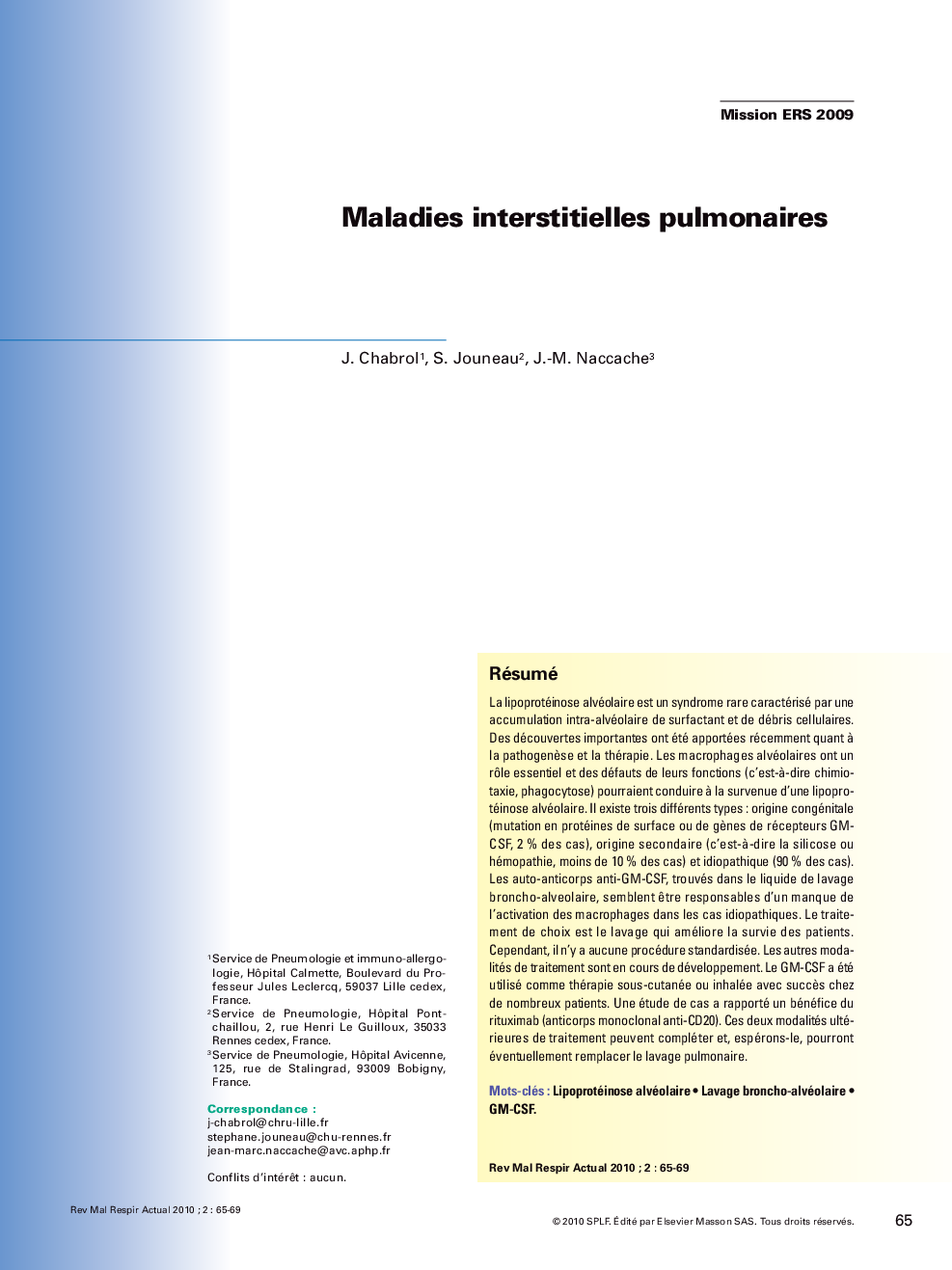| Article ID | Journal | Published Year | Pages | File Type |
|---|---|---|---|---|
| 4216526 | Revue des Maladies Respiratoires Actualités | 2010 | 5 Pages |
Abstract
Pulmonary alveolar proteinosis (PAP) is a rare syndrome characterized by intra-alveolar accumulation of surfactant component and cellular debris. Important discoveries have been made recently with respect to pathogenesis and therapy. Alveolar macrophages have a critical role in the surfactant clearance and defects in their functions (i.e chemotaxis, phagocytosis) could lead to PAP. The three different types of PAP are congenital PAP (mutation in surfactant protein or GM-CSF receptor genes, 2% of total cases), secondary PAP (i.e silicosis or haematological malignancies, less than 10% of total cases) and idiopathic PAP (90% of cases). Anti-GM-CSF blocking autoantibodies, found in the serum and bronchoalveolar lavage fluid, seem to be responsible for a lack of macrophages activation in idiopathic cases. Treatment of choice of PAP is the whole lung lavage, which improves survival of patients. However there are no standard indications nor standard techniques and some patients are non-responders. Alternative modalities of therapy are in development. GM-CSF therapy has been used as subcutaneous or aerosolized therapy with success in many patients. One case report has described a benefit of Rituximab (anti-CD20 monoclonal antibody). These two later modalities of treatment may supplement and hopefully may eventually replace whole lung lavage.
Related Topics
Health Sciences
Medicine and Dentistry
Pulmonary and Respiratory Medicine
Authors
J. Chabrol, S. Jouneau, J.-M. Naccache,
